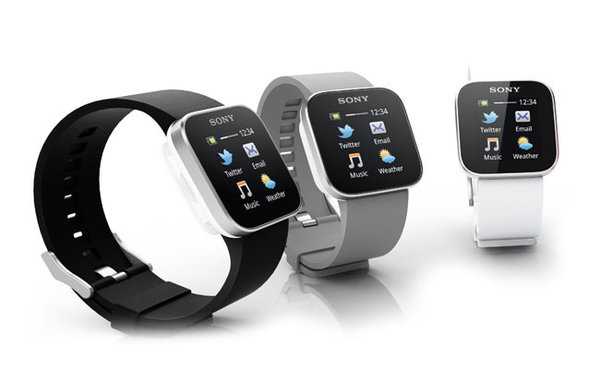Let me start out by stating that Apple is not the first to enter this space. There have been numerous products that have attempted to integrate with iOS and Android (Pebble, Sony's SmartWatch, etc.). These products weren't really disruptive innovations because they extended the functionality of smartphones, i.e. they were accessories. It's impossible for a product complementary and disruptive to a product category at the same time.
But wouldn't smartwatches have been disruptive to the wristwatch industry? I don't think so. An average smartphone user looks at his device approximately 150 times a day, which makes a wristwatch redundant. This implies that smartphones have already been disrupting the wristwatch industry. Unsurprisingly, numerous surveys have shown decreasing interest in wristwatches over the past few years. Keeping this in mind, let's take a look at Apple's product positioning choices with the iWatch:
iWatch as an iPhone/iPad Companion
The most obvious move would be to position the iWatch as a companion that can extend the functionality of an iPhone/iPad - with easy access the device's notification center (messages, calendar, reminders, etc.) and in-built Siri functionality.The short-term problem with this move is that it limits the potential market for the product to iPhone/iPad users (primarily in developed markets). The long-term problem with this move is that it really does nothing to address Apple's long-term growth needs. The iWatch is likely to be a lower value product, and even a rapid ramp up is unlikely to provide a big boost to revenues. Also, the product will be seen as a high-priced accessory by consumers, and something that can easily be emulated by competitors. As I stated above, this wouldn't be a disruptive product.
iWatch as a Standalone Device
This would be a more difficult move, but one with more disruptive potential. If Apple's goal is to launch a product with disruptive potential, it has to be positioned as a potential replacement for a low-end smartphone purchase (if not low-end smartphone usage), i.e. the message to the buyer would be that he could get more bang for his buck by holding on to his old phone and buying the iWatch (similar to the impact of tablets on PC purchases). Even with a barebones feature set, this strategy has potential to disrupt the low-end smartphone market, especially in emerging markets (assuming an iWatch is priced below $200).Of course, the challenges here are far more significant - primarily design & engineering related. At this stage, the battery power backup for an iWatch sized product would be very limited. Even if it was powered by kinetic energy, it may be nearly impossible to support an on-board GSM radio. The iWatch would need access to the internet and standalone applications. A 1.5 inch screen would provide a sub-par experience with apps and browsing, and it may be next to impossible to use the touchscreen for navigation or input. This leaves Siri as the primary input method, which may not be reliable enough at this stage. While I won't question Apple's expertise, these are significant challenges for any company.
I don't think Apple will be able to launch the device as an accessory and then transition it to a standalone device either. The problems that need to be solved are likely to be vastly different in both cases. Efforts to improve the product's experience as an accessory (for immediate markets) are likely to take away bandwidth from efforts to improve the product's standalone features. In addition to this, Samsung's work with flexible displays and Google glasses are likely to produce significant disruptive threats that will be difficult to tackle during this product transition.
If Apple does launch the iWatch, their product choices may tell us a lot about their long-term strategy. Do they want to remain focused on the high-end market or diversify to lower segments?








